October 28 - November 30, 2024: Issue 636
A Turtle-y Awesome Rescue By Whale Beach SLSC + Shell us what you see this Summer: TurtleWatch needs your help!
A quiet and reasonably uneventful weekend patrol for Whale Beach SLSC members quickly turned into an afternoon to remember on Sunday 3 November, after an unexpected alert from a member of the public right on knock-off.
Club Captain Olivia Rees-Ewen had just jumped in to help pack up patrol when they were approached and alerted to a turtle upside down and in distress around past the rock pool.
"We sent two patrol members around to check it out and the jet ski was on-hand as well but when they got there, they realised it wasn’t safe to move it,” she said.
The turtle was too heavy for the lifesavers to move over the rocks, so they called the rescue into the State Operations Centre and NSW National Parks and Wildlife was able to respond to assist.
Like with any rescue scenario, the lifesavers stayed with the patient until help arrived.
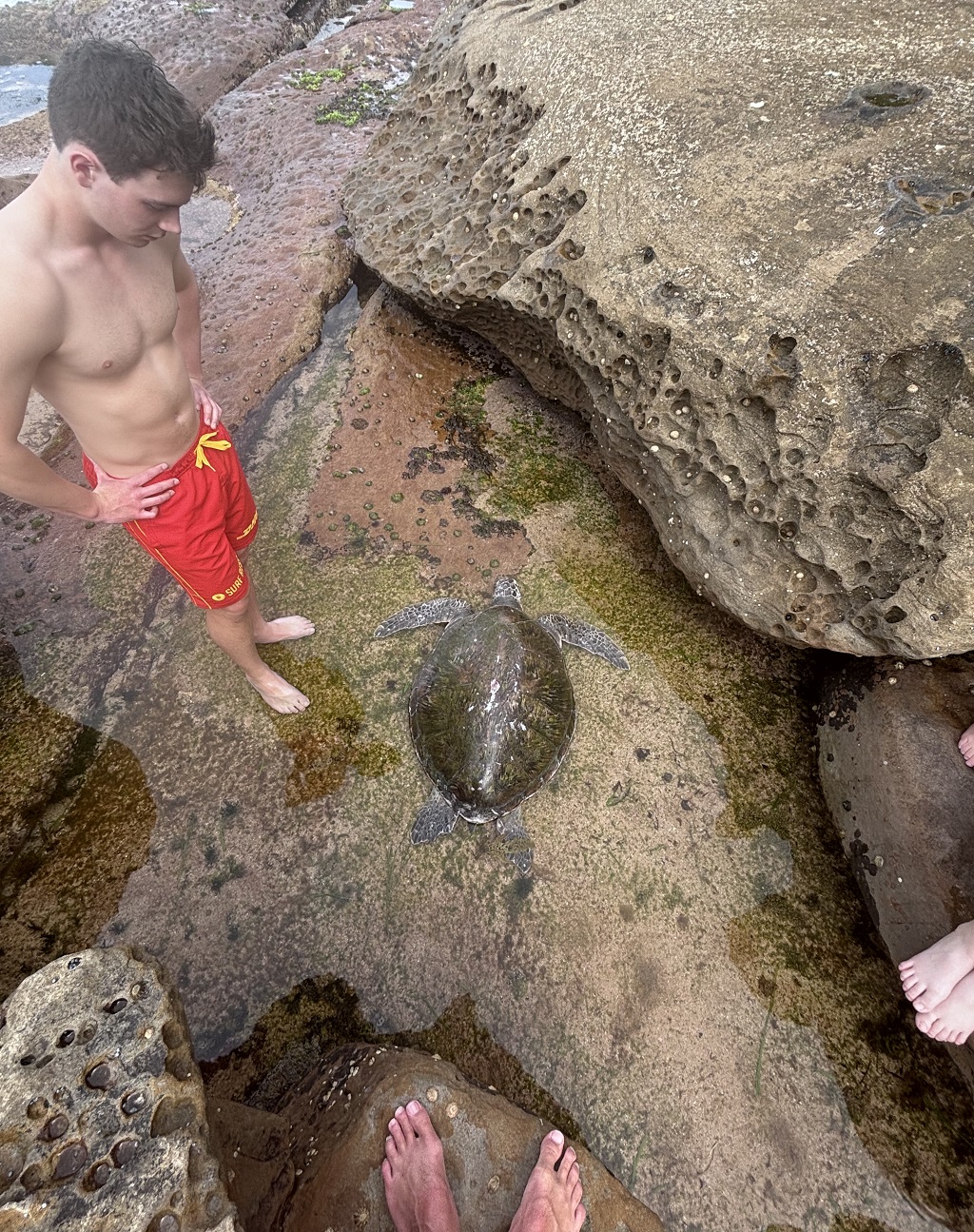
At 4.45pm the team, along with Ben from NSW National Parks & Wildlife, was able to get the turtle on a spinal board and move it out of the rock area.
“We needed four people to move the turtle and six to hoist it onto the vehicle,” Olivia added.
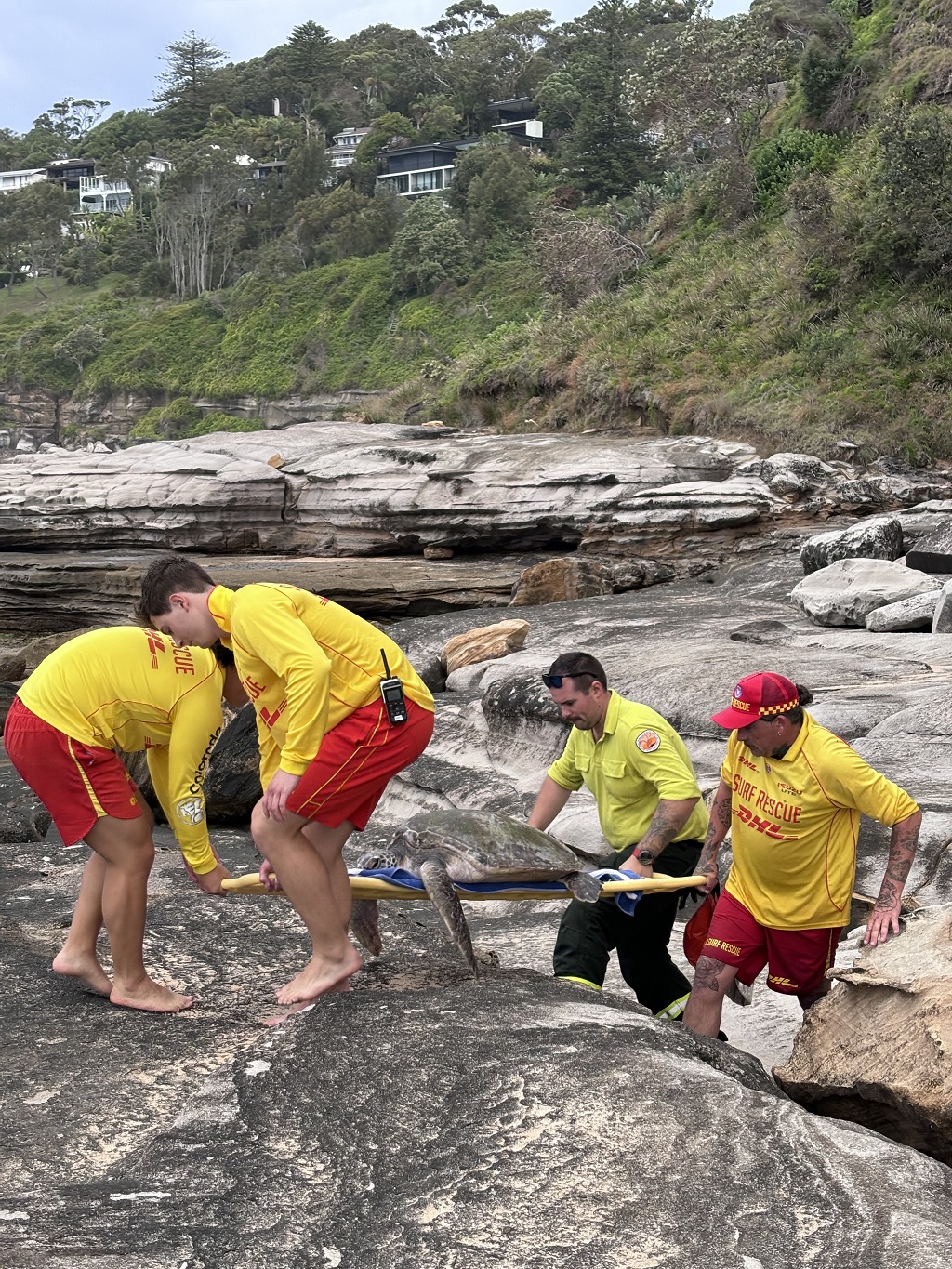
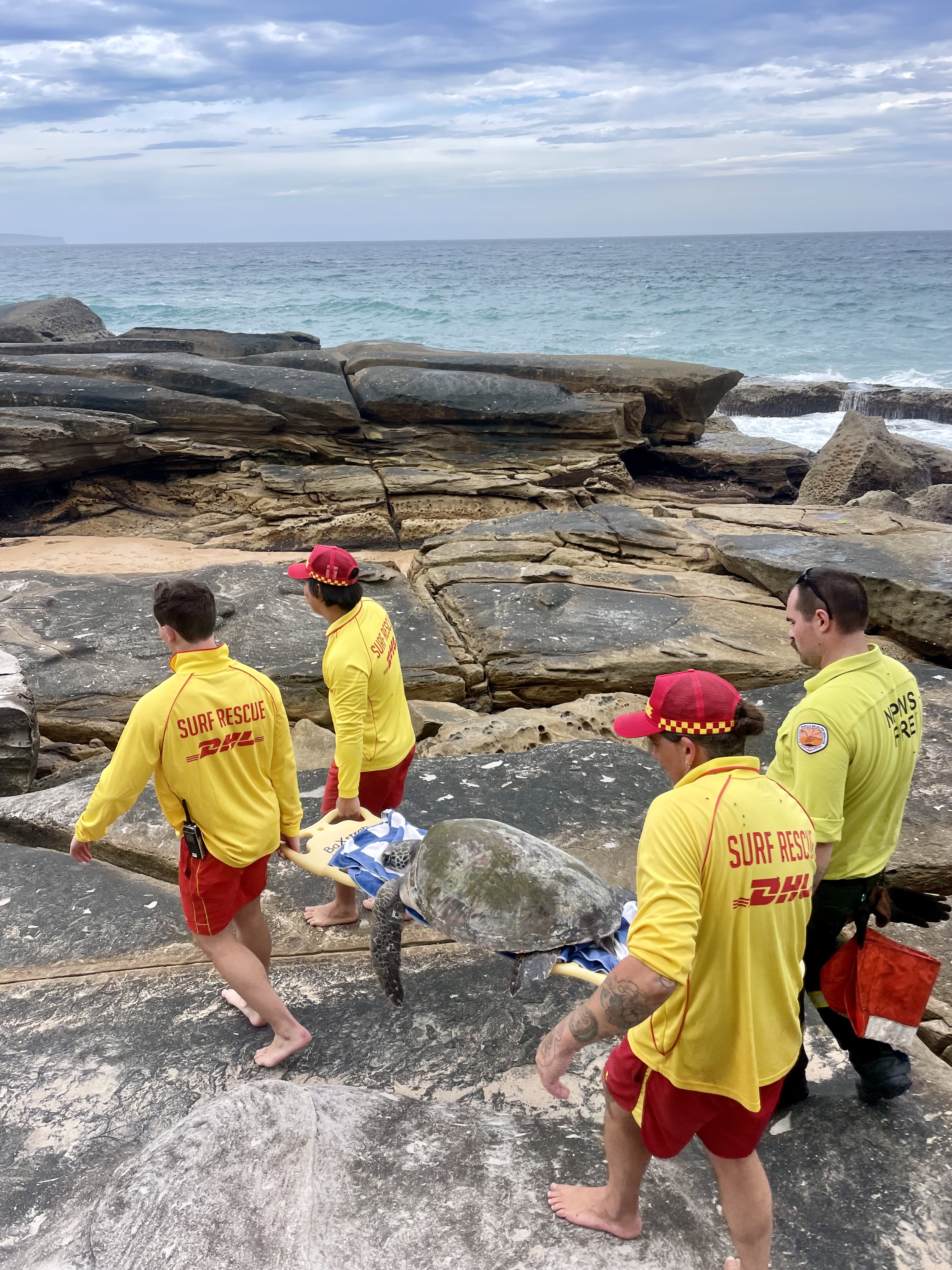

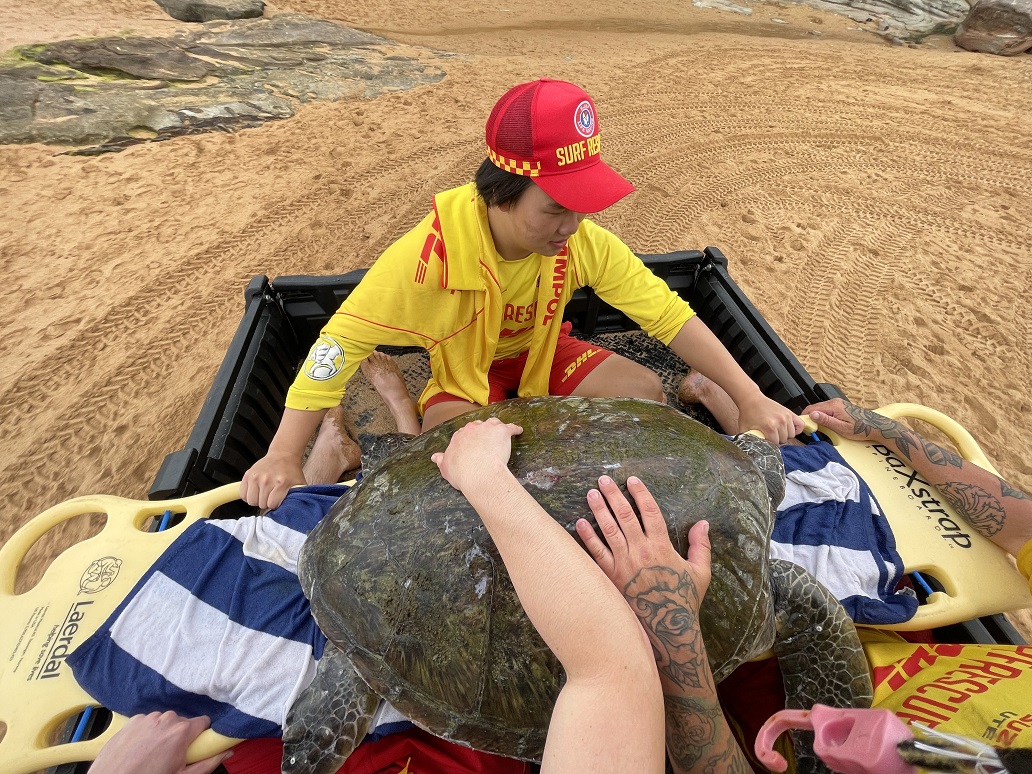
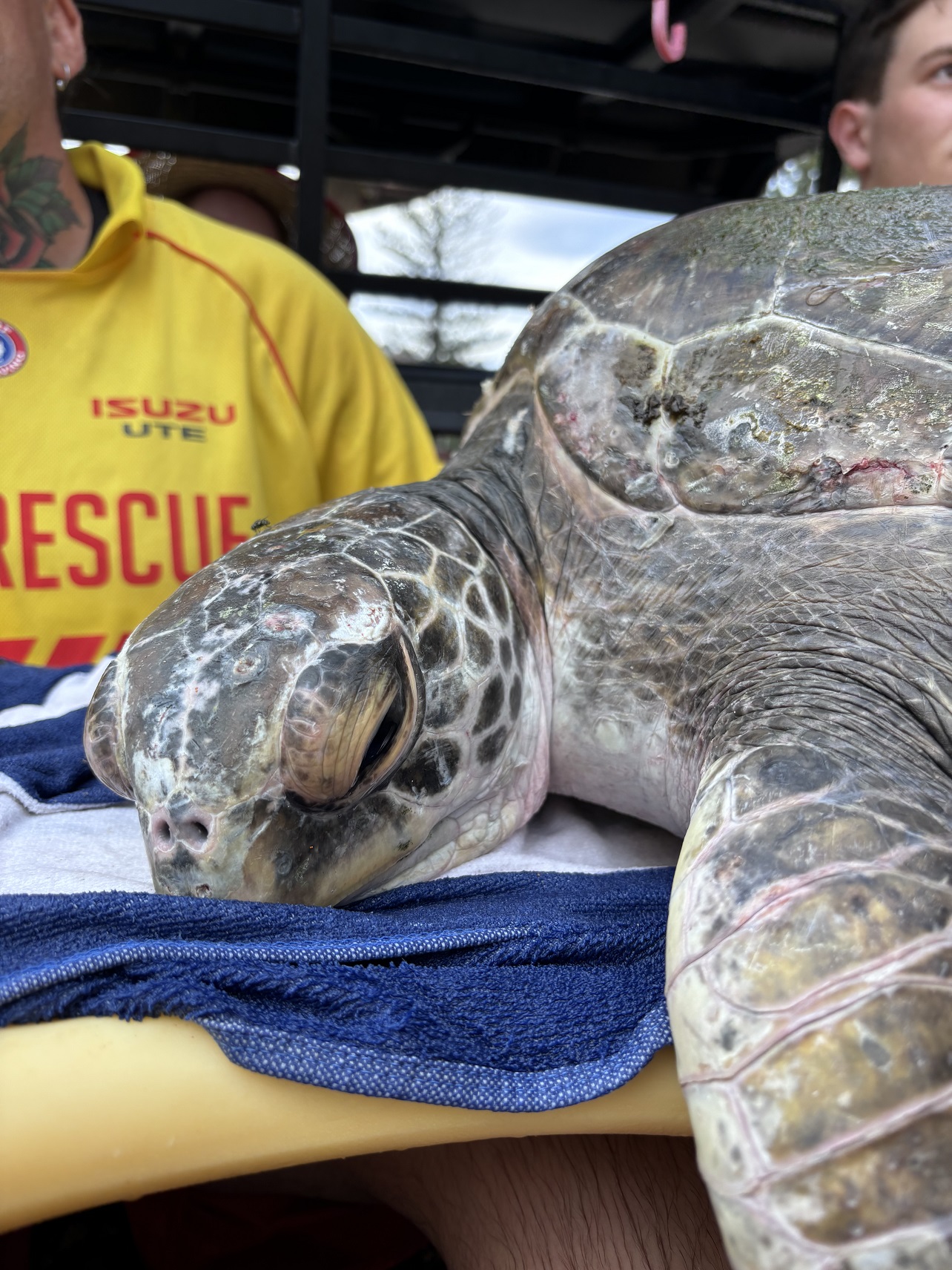
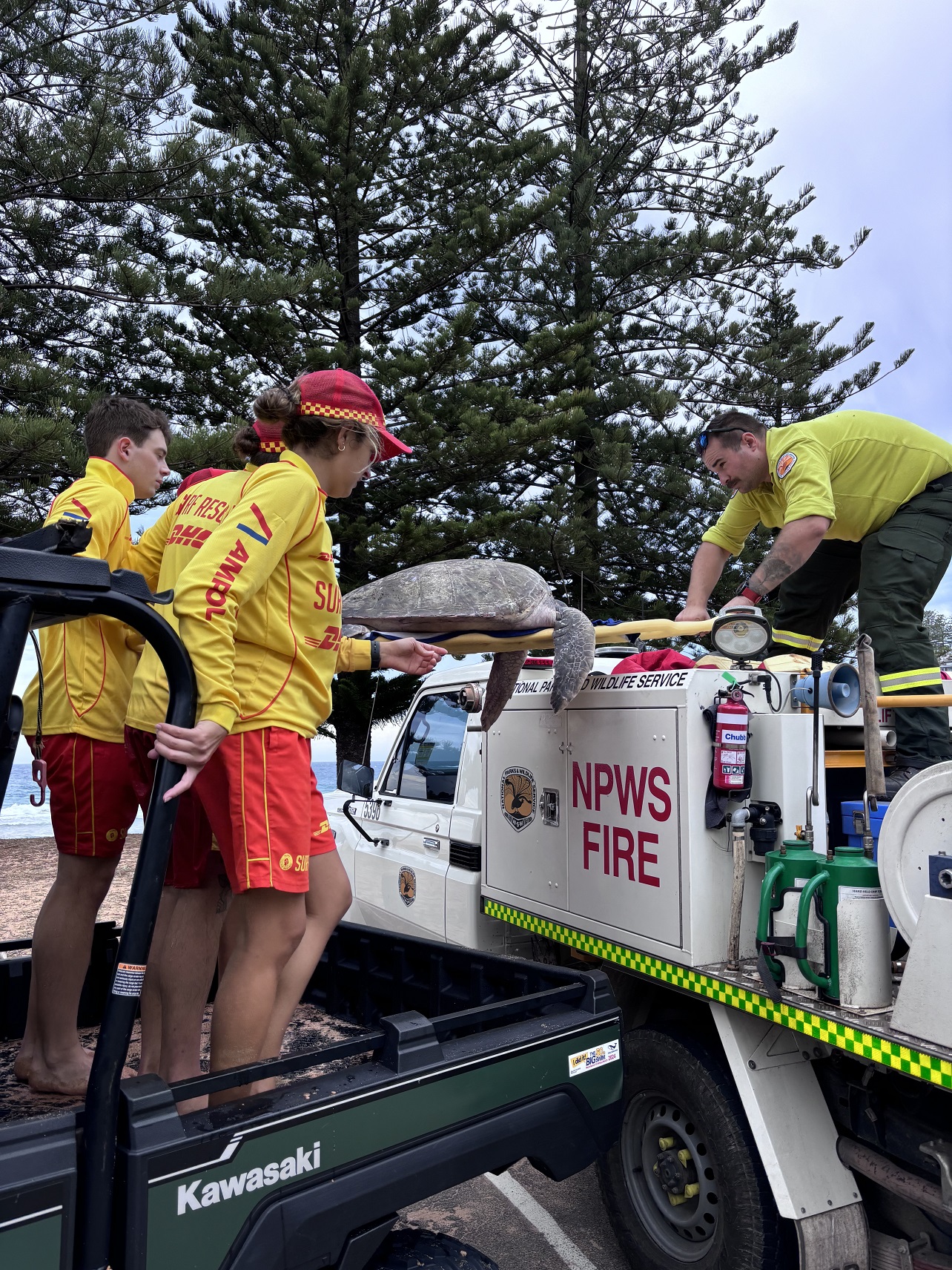
After a successful rescue, the turtle - named ''Crush'' by the patrol - was transported to the Taronga Zoo hospital.
Receiving an average of 40 marine turtles annually, the Taronga Wildlife Hospital - Sydney (TWH) has successfully released rehabilitated green turtles with satellite trackers to discover where they go and assess their survivability upon release.
In addition, TWH and the Australian Registry of Wildlife Health have collected over 200 green turtle samples from health investigations over the last decade. Using these samples and the satellite tracking data, this project is employing the latest scientific techniques to identify important foraging and resting sites along the NSW coast and examine connectivity between natal breeding sites and foraging sites.
This knowledge is crucial to understand turtle ecology and to assess the impact of threatening processes (e.g. plastic ingestion, entanglements, disease, boat strikes) on green turtle breeding stocks. This will in turn assist in the development of more effective management strategies for the conservation of this migratory species.
Taronga’s scientists have partnered with NSW National Parks and Wildlife Service and the Sydney Institute of Marine Sciences to assess the movement and habitat use of free-ranging marine turtles in New South Wales.
Through satellite tracking and diet analysis, this project will help identify biologically important areas for marine turtles in NSW and inform regional conservation priorities for these threatened species.
In June 2024, the team successfully attached satellite trackers to two Loggerhead Turtles that had been caught on scuba in Forster and one Green Turtle caught in the shallow waters of Coffs Harbour Marina.
To date, all three turtles have remained in the local area where they were caught, providing much needed scientific data to support the notion that New South Wales is an important foraging ground for marine turtles.
Additional fieldtrips to satellite track green, hawksbill and loggerhead turtles will be conducted over the next three years, with the aims to compare movement, diet and natal origins with our pre-existing data from stranded marine animals.
Pittwater MP Jacqui Scruby will be pleased to hear about the rescue - Mrs. Scruby nominated loggerhead turtles as her favourite local wildlife species when joining the rounds of 2023 Ringtail Posses as a member of the Inaugural Crew.
Jacqui had seen a loggerhead regular of Whale Beach in Dolphin Bay.
See: Ringtail Posse: 1 – February 2023; Anna Maria Monticelli: King Parrots/Water Dragons - Jacqui Scruby: Loggerhead Turtle - Lyn Millett OAM: Flying-Foxes - Kevin Murray: Our Backyard Frogs - Miranda Korzy: Brushtail Possums
Of course the MP for Pittwater isn't the only resident who has a 'crush' on local turtles.
In related news, NSW TurtleWatch is calling on the public to keep their eyes peeled at the beach this Summer and help expand our understanding of nesting sea turtles by reporting nesting locations you spot up and down the coastline.
As 144 Green Turtle eggs were laid at North Steyne in January 2020, this would apply to the Manly to Barrenjoey peninsula too.
The public play a vital role in aiding in the survival of sea turtles across the state through not only monitoring critical nesting habitat, but also identifying potential threats to nesting sea turtles. If you’re down at the beach and spot sea turtle tracks or a nest, please call NSW TurtleWatch on 0447 877 149 or NSW National Parks and Wildlife Service (NPWS) on 1300 072 757.
To best help our sea turtles, you can:
- walk your local beach early in the morning, as sea turtles generally nest during the night
- keep your eyes peeled for any tracks in the sand, which are usually 80–100 cm wide and can sometimes be mistaken for tyre tracks
- take your phone with you so you can quickly call NSW TurtleWatch or NPWS if you see signs of turtles, tracks or a nest, as well as potential threats to these nesting turtles.
Last nesting season was one of the highest on record for NSW Turtlewatch, with 16 total nesting events recorded from New Brighton Beach in the Byron Shire to Diamond Beach on the Mid North Coast.
During nesting season, sea turtles lay around 100 eggs per clutch on the beach and leave them in the sand to incubate for around 2 months. The sand’s temperature determines the hatchlings' sex, with cooler sand producing more males, while warmer sand yields more females.
NSW TurtleWatch has been developed by Australian Seabird and Turtle Rescue and is proudly funded by the NSW Government.
NSW TurtleWatch Project Officer Merryn Dunleavy said this week:
'In NSW, we are very lucky to have both green turtle and loggerhead turtle species nesting on our coastlines. Both species are threatened by climate change, so it’s important we do everything we can to protect each nest.
'Sea turtle nests are vulnerable to a range of threats including predation, high tides, and erosion. The sooner we are notified of a nest, the quicker we can get down to the beach and physically protect and monitor the nest until it hatches.
'It’s estimated that only one in every 1000 hatchlings will reach maturity, meaning every single nest and hatchling that is protected, will make a huge impact on the survival of the species.
'With such a large expanse of coastline to monitor, we hope to engage more people to recognise and report turtle nesting activities. The more understanding we have, the more we will be able to ensure their protection in the future.'

Whale Beach SLSC's Green Turtle rescuers photos; courtesy WBSLSC Club Captain Olivia Rees-Ewen and Surf Life Saving NSW